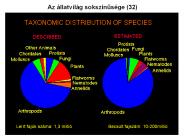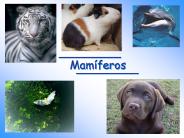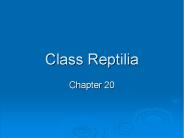Synapsida PowerPoint PPT Presentations
All Time
Recommended
See a recovery after the Late Devonian extinction of tabulate ... by the placoderms, the stethacanthids exploded into a riot of bizarre forms and lifestyles. ...
| PowerPoint PPT presentation | free to download
Class Reptilia Subclass Synapsida Order Pelycosauria ... Echidna (monotreme, mammal) Tasmanian devil (marsupial, mammal) Kangaroo (marsupial, mammal) ...
| PowerPoint PPT presentation | free to view
Specialized cell types. http://www-class.unl.edu/bios201a/ Phylum Chordata. Gill slits ... Diapsida: dinosaurs, birds, snakes, lizards. Synapsida: mammals ...
| PowerPoint PPT presentation | free to view
... To Fishes and Ancestor Lissamphibia Amniota Diapsida Reptilia Tetrapoda Lepidosauria Squamata Extant Herp Groups Archosauria Synapsida 6 Squamata lizards, ...
| PowerPoint PPT presentation | free to view
allantois nitrogenous waste- ammonia. 5. Amnionic egg. embryo. chorion. amnion. Yolk. sac. allantois. shell. 6. Temporal fenestra. Orbit of eye. Anapsida- no ...
| PowerPoint PPT presentation | free to view
Sauropod dinosaurs. Therapod dinosaurs. Class Mammalia. Mammal-like reptiles. Testudines ... Tomistoma schlegelii. GAVIALIDAE. Gavialis gangeticus. Harshman et ...
| PowerPoint PPT presentation | free to download
They are names that are used for convenience in discussing vertebrate evolution. ... Salientia (Anura) 'Frogs' Urodela (Caudata) 'Salamanders' Tetrapoda: Amniota ...
| PowerPoint PPT presentation | free to view
Common North American painted turtle 'Amphibia' Amniota ... 'Horny-toads' are not toads. Komodo dragon largest living lizard. Meditteranean chaemelon ...
| PowerPoint PPT presentation | free to download
GEOL 240 The Dinosaurs: Origin of Life and Fossil Record
| PowerPoint PPT presentation | free to view
Ovis aries. Q-A vs. D-S jaw joint- the defining key character' for 80 years ~250 MYA ... Traits evolve at multiple locations on phylogeny. Reptilia. Archosauria ...
| PowerPoint PPT presentation | free to view
Herpetology. Ornithology. Mammalogy. Ichthyology. Class Chondrichthyes. Class Agnatha. Class Amphibia ... Lateral skeletal elements in appendage. fin rays in appendage ...
| PowerPoint PPT presentation | free to view
The Vertebrate Story
| PowerPoint PPT presentation | free to view
Class Chondrichthyes Herpetology is study of: Class Osteichthyes Class Mammalia Dinosauria Crocodilia Testudines Class Amphibia Class Agnatha Class Aves
| PowerPoint PPT presentation | free to view
... armadillo 2 Pholidata Schubdieren Pangolin: schubdier 4 soorten in Africa 3 soorten in ZO Azie 3 Lagomorpha Haasvormigen hazen, konijnen, fluithazen, ...
| PowerPoint PPT presentation | free to view
... armadillo 2 Pholidata Schubdieren Pangolin: schubdier 4 soorten in Africa 3 soorten in ZO Azie 3 Lagomorpha Haasvormigen hazen, konijnen, fluithazen, ...
| PowerPoint PPT presentation | free to view
Triassic - North America and Gondwanaland rift apart; ... Africa and Antarctica/Australia rift apart. End of Jurassic - Eurasia rotates, closing off Tethys, ...
| PowerPoint PPT presentation | free to view
Archosauria (crocodiles, dinosaurs, pterosaurs, birds) Late Triassic ... Dinosaurs first appear as do mammals, turtles, and pterosaurs. Shallow warm seas ...
| PowerPoint PPT presentation | free to download
Az llatvil g soksz n s ge (32) Le rt fajok sz ma: 1,3 milli Becs lt fajsz m: 10-200milli Legkor bbi llati fossz li k: Ediacara fauna (600 milli ...
| PowerPoint PPT presentation | free to download
Mam feros A paleomastozoologia a divis o da paleontologia dedicada ao estudo dos mam feros. Eles aparecerem pela primeira vez no registro f ssil do Tri ssico ...
| PowerPoint PPT presentation | free to download
... having a single cavity in their skulls through which muscles from the jaw pass. ... aethiopicus - 2.6-2.3 Ma - known from one skull plus some other bits. ...
| PowerPoint PPT presentation | free to view
Mesozoic Era (Jurassic Period)- Age of Reptiles ... Labyrinthodont amphibians led to stem ... Figure 5.14: (a) Archaeopteryx (b) pigeon. Literature Cited ...
| PowerPoint PPT presentation | free to view
Vertebrate Characteristics Kingdom Animalia; Phylum Chordata; Subphylum Vertebrata Chordata Characteristics Dorsal hollow nerve cord Notochord ( back cord ...
| PowerPoint PPT presentation | free to view
Biology 340 Comparative Embryology Lecture 6 Dr. Stuart Sumida Introduction to Embryology of Chordata Cephalochordata Amphioxus ...
| PowerPoint PPT presentation | free to download
... ventral portion of shell North American box turtle has hinges Eight cervical vertebrae Class Reptilia Long Life ... Southeast Asia
| PowerPoint PPT presentation | free to download
Order Primates - lemurs, monkeys and apes; 376 species. Order Rodentia - rodents; 2277 species ... Ancestral amniote skull types. ANAPSID 'stem reptiles' ...
| PowerPoint PPT presentation | free to view
Multituberculates - now extinct - rodent-like mammals who lived from Jurassic to ... marsupial dogs, cats, rodents, even a lion-like marsupial with retractable claws ...
| PowerPoint PPT presentation | free to view
... Class Aves Rhynchocephalia Plesiosaurs Crocodilia Pterosaurs Ornithischia Saurischia Sauropod dinosaurs Therapod dinosaurs Class Mammalia Mammal-like reptiles ...
| PowerPoint PPT presentation | free to download
characterized chiefly by a vertebral column. Earliest known was the conodont ... sharing a more recent common ancestor with Allosaurus than with modern birds) ...
| PowerPoint PPT presentation | free to download
Monotremes 'Spiny Anteaters' (egg-laying) BIRDS & MAMMALS. Monotremes ... 5. Egg laying mammals ... The Tasmanian devil. the largest carnivorous ...
| PowerPoint PPT presentation | free to view
Lots of claws and teeth, including huge talon on one digit of forelimbs ... Dinosaurs were huge - could have been effectively homeothermic w/o endothermy ...
| PowerPoint PPT presentation | free to view
Vertebrate Biology Lecture Notes The Phylum Chordata Vertebrates belong to the Phylum Chordata - these are animals that, at one stage or another of their life ...
| PowerPoint PPT presentation | free to view
Chapter 22: Specialized Teeth, Hair, Endothermy, and Viviparity Usual Fertilization Occurs in upper third of the oviduct within hours of copulation Delayed ...
| PowerPoint PPT presentation | free to download
Class Reptilia Chapter 20 Class Reptilia Reptilia - to creep Turtles, crocodiles, lizards, snakes, worm lizards, and tuatarans Class Reptilia First vertebrates to ...
| PowerPoint PPT presentation | free to download
... stage or another of their life cycle possess the following three characteristics: ... Pisces. Superclass. Tetrapoda. Anamniotes. Amniotes ...
| PowerPoint PPT presentation | free to view
Turtles, crocodiles, lizards, snakes, worm lizards, and ... Gecko. Habitat. Semitropical. Climbers. Adhesion disks aid. Nocturnal. Clicking vocalization ...
| PowerPoint PPT presentation | free to view
Title: PowerPoint Presentation Author: Lilijeca Last modified by: Dr Vladimir iki Created Date: 9/18/2003 10:03:44 AM Document presentation format
| PowerPoint PPT presentation | free to download
... infernalis (Big Bend National Park, Texas, photo:H.W.Greene) ... Longhorns (Bos taurinus, Wichita Mountains, OK; photos:H.W.Greene) What is a mammal? ...
| PowerPoint PPT presentation | free to view
Gila Monster. Coral Snake. Most lizards small (to 16 mm), though Komodo Dragon to. 3 m ... this evolutionary remodeling are evident in a succession of fossils. ...
| PowerPoint PPT presentation | free to view
Algunos con paladar secundario que separa el sistema respiratorio del digestivo ... Estructura interna de un cocodrilo macho. Crocodylus niloticus. Alligator ...
| PowerPoint PPT presentation | free to view
Class Reptilia Chapter 20 Class Reptilia Reptilia - to creep Turtles, crocodiles, lizards, snakes, worm lizards, and tuatarans Class Reptilia First vertebrates to ...
| PowerPoint PPT presentation | free to view
This class includes bass, trout, perch, tuna and herring. ... fossil record chronicles the transition to land over a 50-million-year period ...
| PowerPoint PPT presentation | free to view
Random Permutation. Random permutation destroys any correlation among ... A permutation tail probability (PTP) is the proportion of data sets with as good ...
| PowerPoint PPT presentation | free to download
Part I: Evolutionary History Chapter 1: Tetrapod Relationships & Evolutionary Systematics What is Herpetology? is it the study of the herpes virus?
| PowerPoint PPT presentation | free to view
no urinary, cardiovascular, respiratory or nervous system. cellular grade of ... legs have two branches (biramous appendages) outer branch are flattened gills ...
| PowerPoint PPT presentation | free to view
Animal Evolution Porifera sponges 5,000 living sponge species Three Main Groups: hexactineuida (glass sponges) demospangia calcarea (calcareous sponges) no coelom ...
| PowerPoint PPT presentation | free to view
... among the resulting trees is summarized with a majority-rule consensus tree ... sets are analysed and the results summarised with a majority-rule consensus tree ...
| PowerPoint PPT presentation | free to view
Find Reptiles & Amphibians ads in La Trobe. Buy and sell almost anything on icracker classifieds. Free, local, classifieds, classified Ads, icracker, icracker.com.au, La Trobe, Reptiles & Amphibians, classes, real estate, babysitter, dog, cat, shared rooms, pets, rental, apartments, apartment for rent, jobs, resume, cars, housing, furniture, personals, services, events, appliances marketplace, private, for free, search, find For more info visit: https://la-trobe.icracker.com.au/pets/reptiles-amphibians/

















































